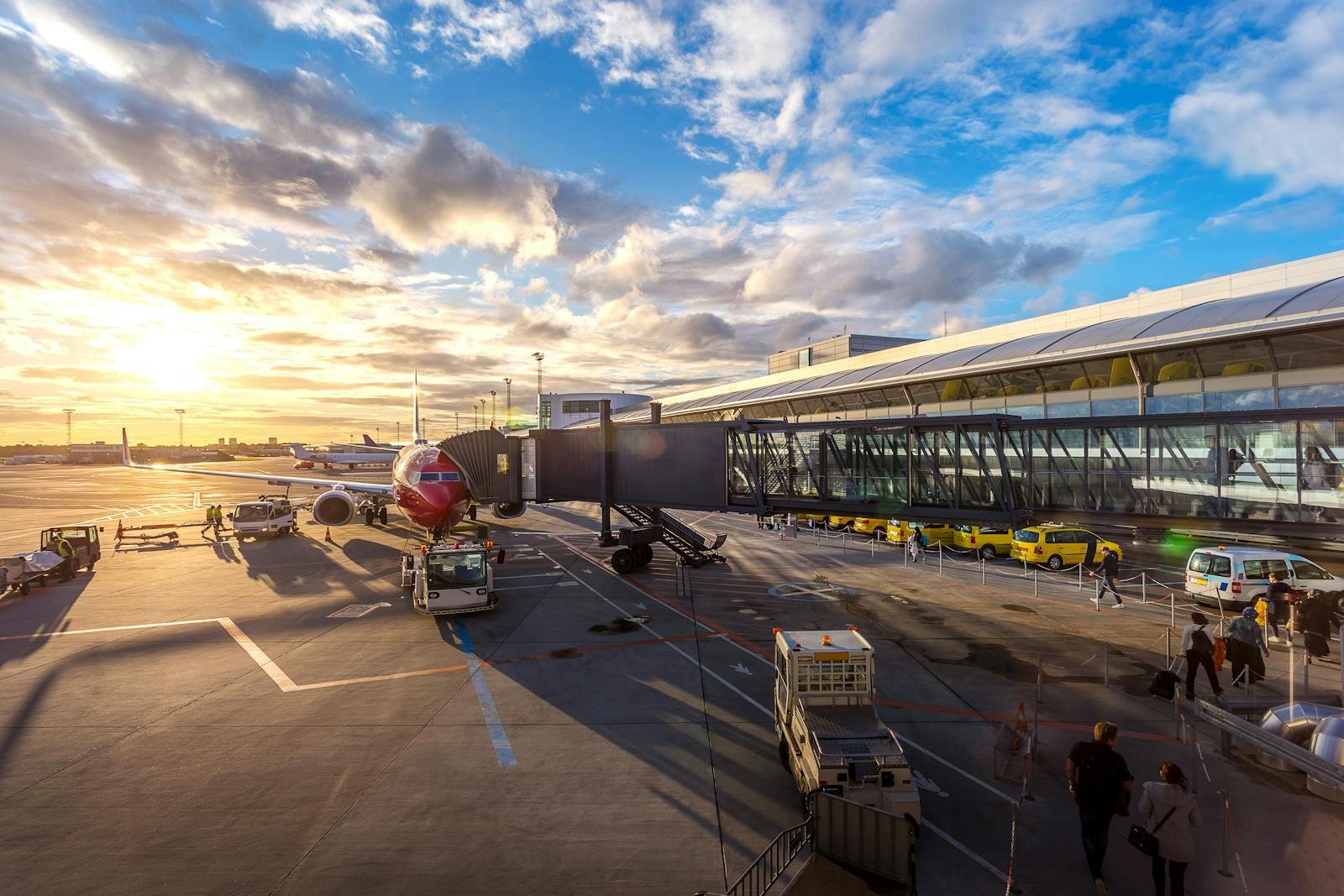
Introduction to Holiday Travel Strategies
Holiday travel often brings together friends and family, creating cherished memories and experiences. However, many travelers find themselves overwhelmed by the rising costs associated with flying during peak seasons. The reality is that substantial savings can be found, but they require a strategic approach to uncover airline deals that typically remain hidden from the average consumer. Without an informed strategy, travelers might end up overpaying for their flights.
To navigate the complexities of holiday travel economically, it is crucial to look beyond traditional booking methods. Many travelers tend to book their flights directly through well-known airlines or popular travel websites, which can limit their exposure to more competitive pricing options. Lesser-known airlines often offer promotional fares or discounted rates that go unnoticed, leading to significant savings. Moreover, utilizing flexible travel dates can further enhance the search for affordable airfare.
Another effective strategy involves monitoring fare alerts and subscribing to newsletters from airlines, which can yield early access to seat sales. Exposure to unpredictable fluctuations in ticket prices allows travelers to seize opportunities when fares drop. Additionally, embracing alternative airports can lead to more attractive options and further discounts, as smaller terminals may not feature the same passengers’ congested traffic as larger hubs.
It’s imperative for travelers to invest time in researching and comparing different airlines and fare options. By understanding the underlying market dynamics and recognizing patterns in airline pricing, savvy travelers can capitalize on established trends to secure tickets at discounted rates. Through this awareness, travelers can maximize their holiday experiences while adhering to budget constraints, making for a more enjoyable journey without the financial stress.
Understanding Airline Pricing Tactics
Airlines employ a variety of pricing strategies that significantly influence ticket prices. One of the most prevalent methods is dynamic pricing, which adjusts fares based on demand and supply factors. This technique analyzes a multitude of variables, including the time of purchase, seasonal trends, and flight popularity. As a result, travelers often observe stark fluctuations in ticket prices over short periods. For instance, prices may surge as a flight date approaches, primarily if the flight is nearing full capacity, prompting many airlines to capitalize on last-minute bookings.
Another common strategy is surge pricing, where airlines increase fares during peak travel times or high-demand events. This tactic takes advantage of consumers’ urgent need to travel, especially during holidays or major events, leading to prices that can skyrocket compared to off-peak periods. Understanding this strategy equips consumers with the knowledge needed to make more insightful decisions about when to book their flights, thus potentially saving them significant amounts of money.
An additional factor to consider is the concept of fare buckets. Airlines categorize seats into different fare classes or “buckets,” each with its unique pricing and restrictions. As tickets are sold, the available seats in the lower fare buckets deplete, prompting a shift to higher-priced fare classes. This segmentation allows airlines to maximize revenue while catering to different market segments, from budget travelers to premium customers. Being aware of fare buckets can assist consumers in identifying the best time to book their tickets before they transition to more expensive options.
In essence, understanding these pricing tactics not only demystifies the reasons behind fluctuating ticket prices but also provides travelers with strategies to secure the best deals. By keeping an eye on demand patterns, booking at optimal times, and recognizing fare class structures, consumers can navigate the complex landscape of airline pricing more effectively.
Best Times to Book Your Holiday Flights
When planning a holiday journey, timing is a critical factor that can substantially impact the overall cost of air travel. Historical trends reveal that certain periods throughout the year are more advantageous for booking flights. Generally, the optimal time to secure holiday flights is varied, falling within a window of several months leading up to your desired travel date.
Research indicates that booking your flight approximately two to three months in advance often yields the best deals. This timeframe allows travelers to capitalize on lower ticket prices before demand surges. Particularly, late summer to early fall, around August to September, is noted as a prime opportunity to purchase tickets for the upcoming holiday season. Airlines tend to offer promotional fares during this period, aiming to fill seats ahead of increased passenger volumes.
Moreover, monitoring specific days within the week for ticket purchases can further enhance your chances of finding lower prices. Studies suggest that Tuesdays and Wednesdays are typically advantageous for booking flights, as airlines may adjust their fares early in the week to compete with rival carriers. Additionally, consider flying on less popular travel days, such as mid-week flights, which generally exhibit reduced prices compared to weekend travel.
It is also prudent to remain vigilant for seasonal offers and sales events that airlines frequently promote. Major sales for holiday travel may emerge during specific periods, including Black Friday, Cyber Monday, and other promotional days. By being proactive and monitoring these trends, travelers can better position themselves to enjoy significant savings on their holiday flights throughout the busy travel season.
Sign-up Benefits and Loyalty Programs
One of the most effective ways to unlock hidden holiday deals is by signing up for airline newsletters and loyalty programs. Airlines often reward their subscribers with exclusive offers, promotional codes, and early notifications about upcoming sales. By staying informed through these channels, travelers can access discounts and deals that may not be widely advertised, providing a distinct advantage during holiday seasons when prices tend to soar.
Many airlines operate loyalty programs that allow members to accrue points or miles for every dollar spent on flights and services. These loyalty programs can lead to substantial savings when redeemed for future travel, upgrades, or additional benefits. Joining such a program not only enhances your travel experience by providing perks such as priority boarding and free checked baggage but also opens up opportunities to earn bonus points through specific promotions. For instance, many airlines offer double points during specific travel periods or for booking certain types of fares. Thus, it is advantageous to pay attention to these offers as they can significantly enhance the value of your travel budget.
To maximize your loyalty points for travel benefits, it is essential to be strategic. Monitoring your airline’s website or app for bonus opportunities and seasonal promotions can help you maximize your earnings. Additionally, consider using the airline’s credit card, which often provides additional points per dollar spent, and sometimes offers sign-up bonuses that grant even more points upfront. Engaging with airline social media accounts can also yield timely insights into flash sales or limited-time promotions that can enhance your travel experience during peak seasons.
Ultimately, the combination of signing up for airline newsletters and participating in loyalty programs can create a symbiotic relationship where travelers benefit from consistent engagement with the airline, unlocking valuable rewards and deals throughout the year.
Using Flight Comparison Tools and Apps
In today’s digital landscape, flight comparison tools and apps play a crucial role in helping travelers discover the best airline deals available on the market. These platforms aggregate information from multiple airlines, allowing users to easily identify cost-effective options for their desired travel itineraries. For those looking for hidden holiday deals, leveraging these tools is an essential strategy.
One of the primary features to consider when using flight comparison platforms is the ability to filter results based on specific preferences. Users can select criteria such as departure times, layovers, and airline preference, which enhances the chances of uncovering savings that align with individual travel needs. Additionally, many apps offer fare alerts, notifying users when prices drop for their selected routes, ensuring they don’t miss out on advantageous offers.
When utilizing these tools, it is also imperative to compare the final prices after considering all potential fees, such as baggage or seat selection costs. In some instances, budget airlines may quote lower base fares that ultimately become more expensive after ancillary charges are applied. Thus, a well-equipped traveler examines total costs to achieve a holistic view of the available options.
Moreover, understanding the timing of bookings can significantly impact the deals that can be accessed. Many platforms illustrate historical fare trends, helping users gauge whether to book now or wait for a potentially better offer. During peak holiday travel periods, prices can fluctuate drastically, so employing tools that analyze past pricing data can lead to significant savings.
Overall, flight comparison tools and apps are indispensable resources for any savvy traveler seeking hidden holiday deals. By utilizing their diverse features effectively, travelers can make informed decisions and enhance their travel budget, ensuring the most economical airline choices for their journeys.
Secrets to Finding Discounted Packages and Bundles
Traveling during the holiday season can be a costly affair, but savvy travelers can navigate the myriad options available to find significant savings. One of the most effective methods for reducing expenses is through discounted travel packages and bundles. These packages typically combine flights, accommodation, and even rental cars, providing a cohesive travel experience while keeping costs low.
To begin your search for discounted packages, it is important to utilize online travel agencies (OTAs) such as Expedia, Kayak, or Priceline. These platforms often provide exclusive deals that are not available when booking components separately. By using these services, travelers can access a wide variety of options and comparative pricing that can unveil substantial savings. It’s advisable to explore filters that allow you to bundle services for maximizing discounts.
Another key to discovering holiday deals is to subscribe to promotional offers from airlines and hotels. Many carriers and lodging providers offer discounts through newsletters or loyalty programs. By signing up, you can receive alerts about special promotions and unique packages that could include flight and hotel combinations at reduced rates. Additionally, make it a point to check these websites frequently during the holiday season, as flash sales are common and time-sensitive.
Seasonal trends can also play a vital role in package pricing. Flights and hotels tend to be more affordable when booked in advance or during non-peak periods. As such, planning your trips around these trends can lead to valuable discounts. Consider being flexible with your travel dates and enjoy the financial benefits of adjusted itineraries. Combining these strategies can lead to significant savings, ensuring that travelers can enjoy their holiday getaways without breaking the bank.
Flexibility: The Key to Unlocking Lower Fares
When it comes to finding affordable airline tickets, flexibility with travel dates and times can make a significant difference. Many travelers overlook the importance of being adaptable, which often leads to missed opportunities for lower fares. Airlines commonly adjust their prices based on demand, and by avoiding peak travel days, individuals can take advantage of lower costs. Mid-week flights, particularly those on Tuesdays and Wednesdays, generally experience less traveler traffic, translating into more economical options.
Furthermore, adjusting your travel schedule to accommodate these mid-week flights can yield noteworthy savings. For example, a departure on a Tuesday instead of the more popular Friday or Sunday can result in fares that are considerably lower. In addition to the day of the week, travelers should also consider varying their departure and return times. Early morning or late evening flights tend to be more affordable due to lower demand, and thus can provide significant savings when planning travel itineraries.
It is also worthwhile to explore alternative airports when planning a trip. Major cities often have multiple airports, and flying into or out of a less congested terminal can lead to reduced ticket prices. It is critical to compare total travel expenses, including transportation to and from the airport, to ensure that the overall cost remains competitive. Additionally, being open to connecting flights instead of direct routes can often yield substantial differences in price. Utilizing flight comparison websites and setting fare alerts can assist travelers in spotting these hidden deals.
By embracing flexibility with travel plans, airlines can unlock a world of cost-saving opportunities, enhancing the overall travel experience without breaking the bank. Implementing these strategies not only helps with budget management but also enriches the overall journey as travelers reap the benefits of lower fare options.
Tips for Combining Airlines and Routes to Save Money
Traveling can often be expensive, but by considering alternate strategies, travelers can significantly reduce their holiday costs. One effective approach is to mix different airlines or utilize multi-city routes, which allows for flexibility and potential savings. By researching and planning itineraries that combine various carriers, travelers can take advantage of lower fares than those offered by conventional round-trip tickets.
When planning a trip, it is essential to utilize online tools and flight comparison websites that enable the evaluation of different airlines and route options. These platforms often provide the ability to search for flexible dates and multiple destinations, enabling travelers to identify the best savings. For instance, a traveler may find that booking separate legs of a journey with different airlines can yield cheaper options than sticking to one airline for direct routes. Additionally, it may be beneficial to include less popular airports in the search, as this can sometimes lead to more affordable fares.
Moreover, employing multi-city itineraries can allow travelers to explore additional destinations without incurring extensive travel costs. Instead of booking a simple round trip, consider a trip that includes various stops along the way, which can be both enriching and economical. As travelers navigate through various fare options, they are encouraged to remain flexible with their travel dates. Often, flying out on weekdays or during off-peak seasons may yield significantly lower prices.
Incorporating these strategies into travel planning enables individuals to unlock hidden holiday deals. By being open to combining airlines and exploring new routes, travelers have greater potential to find lower fares and ultimately save money, enhancing their overall travel experience.
Conclusion: Navigating the Holiday Travel Landscape
As the holiday season approaches, navigating the complexities of air travel requires diligence and strategic planning. The tips and strategies discussed throughout this post are vital in helping travelers secure the most advantageous deals and reduce travel-related stress. By understanding peak travel times, utilizing fare alerts, and embracing the flexibility of travel dates, individuals can significantly enhance their chances of finding hidden holiday deals.
Moreover, leveraging travel comparison tools and booking far in advance, while remaining aware of airlines’ unique policies and promotions, empowers travelers with information that can lead to substantial savings. Throughout the holiday season, airlines may unveil exclusive offers that can drastically alter pricing, making continuous monitoring of airfares crucial. Travelers should also consider less conventional airports, which can often provide cheaper alternatives, as well as explore package deals that combine flights with accommodation for additional savings.
The effectiveness of these strategies only amplifies when travelers take a proactive approach. Gathering insights from industry trends, remaining adaptable, and researching routes can equip individuals with the necessary knowledge to navigate the holiday travel landscape efficiently. Applying these insights will not only yield financial benefits but also create a more enjoyable travel experience, allowing for a more memorable holiday season.
In closing, by utilizing these strategies and being proactive in their travel planning, travelers can make informed decisions that maximize their holiday experience while minimizing financial strain. Approximately every decision made in advance can contribute to a more seamless journey, ensuring that the focus remains on the joys of the holiday season.








